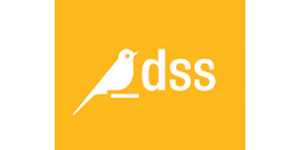
In a highly competitive and thriving economic environment, the enterprises cannot rely on slovenly decision-making techniques. Be it deeply examining data, understanding correlations or figuring out patterns, Predictive Analytics certainly emerges as a game changer and tools associated with it come as a major boon to the businesses as they swiftly manage the entire marketing process. Not only these tools result in the risk reductions but also improves the overall efficiency and growth of any organization.
Which Platforms to go for?
So here in this article, we mention some modern Predictive Analytics tools that made a lot of noise in 2018. The tools we cite involve lesser mathematical complexities and simplified user experiences.
Love what you read? Then grab a fresh piece of content from our library.
SAP Business Objects:
Being one powerful Business Intelligence platform, SAP Business Objects definitely makes to the top of our list. The tool promises to offer agile and informed business decision-making techniques. Hence giving the business an entirely new perspective to incorporate robust and scalable solutions.

SAP Business Object allows businesses to analyze large volumes of data and find insights that are capable of inspiring actions in real time. The platform also allows users to visualize data on a self-service basis and thereby provides a decent time for both users and organizations to focus on creating more business value.
IBM Predictive Analytics:
IBM provides easy to use predictive analysis products and solutions to meet the need of different businesses. IBM SPSS Modeler and IBM SPSS Analytics are two major software that enables users of all skill levels to deploy predictive analytics to improve the businesses. The platform helps the organization to transform the irrelevant data into predictive insights to guide major enterprise decisions and thereby help in the prevention of frauds and maximization of profitability.

With capabilities of text analytics and geospatial analysis, it is easily extendable to open source technologies with optional coding. The platform even enables organizations to adapt quickly to changing business requirements without compromising on security and privacy when using the cloud.
Also Read: Ways Predictive Analytics impact Businesses
QlikView:
One of the most flexible yet simple business intelligence platforms is QlikView. Designed by QlikTech for business intelligence data recovery it helps organizations to extract relevant information from a given set of data. The interpreted data thereafter help the users in creating guided analytics applications. The platform utilizes a user-driven approach to business intelligence and the interface is extremely simple to work with when it building charts and generating custom made dashboards reflecting upon the business challenges.

QlikView is ascertained to bring the fastest and smooth implementation in a short span of time. Even BARC’ BI Survey 10 acknowledged QlikView for its ‘Agile BI’ ability and rendered it as the highest scorer.
Also Read: Qlikview Review: Pros, Cons, and Suitability
Halo:
If you are looking for an end to end supply chain management system that helps in business forecasting and planning then Halo must be your pick. It is an essentially smart platform that provides a reliably established data repository where scenarios can be run and repeated over time to match predictions with the result.

Easily available for hosted or cloud and accessible from any browser, Halo supply chain analytics passes information directly into the hands of the decision makers. With self-service supply chain management and data planning, Halo enables organizations to gain competitive advantage and help increase customer satisfaction.
Also Read: Major Industries deploying Predictive Analytics
Dataiku-DSS
Based out of Collaborative Data Science development platform, Dataiku offers to turn raw data into predictions. Dataiku DSS enables users to apply analytics appropriate algorithms in order to uncover patterns and predict trends. Be it clustering or prediction, users can easily leverage existing libraries or even use custom codes in R, Python or can even integrate external libraries through code API’s.

The best part of the platform is that it offers a visual profile of the data at every step of the analysis. Also with a use of 80+ built-in functions, it helps users to interact, explore and clean raw data form.
Another incentive associated with the platform is that it is quite quick when it comes to preparing and processing data. With a simplified spreadsheet interface that runs in conjunction to contextual transformations, makes working on bulk data a painless process altogether.
Also Read: Descriptive Vs Predictive Vs Prescriptive Analysis
RapidMiner Studio:
RapidMiner Studio is a data science workflow designer that access, load and analyze any type of data to extract statistics and a key piece of information. The platform also cleanses data efficiently for predictive analytics and on the basis of the extracted data, it delivers faster models. The platform comes with an unparalleled set of modeling capabilities and machine learning algorithms for supervised and unsupervised learning.

RapidMiner Studio also means to estimate accurate model performances. It employs a modular approach which prevents data leak and there is no overestimation of prediction performances occurrence.
Also Read: Top ways Predictive Analytics can improve the Banking Sector
Knime Analytics:
Knime or Konstanz Inforation Miner is an open source platform for data analytics, reporting, and integration. The platform employs Apache Hadoop and Apache Spark and integrates with several machine learning libraries such as H2O, Keras, Scikit- Learn for offering advanced predictive analytics. Knime makes the use of native nodes, community contributions, and various tool integrations and therefore emerges as a strong and powerful analytics tool for data scientists.

Also, the platform has easy to learn interface which means the coding becomes an optional and the work is visually documented. Apart from that simple text files, databases, images, and even Hadoop based data can be combined with the same visual flow.
Need a tool on Predictive Analytics? Then contact us for a consultation.




